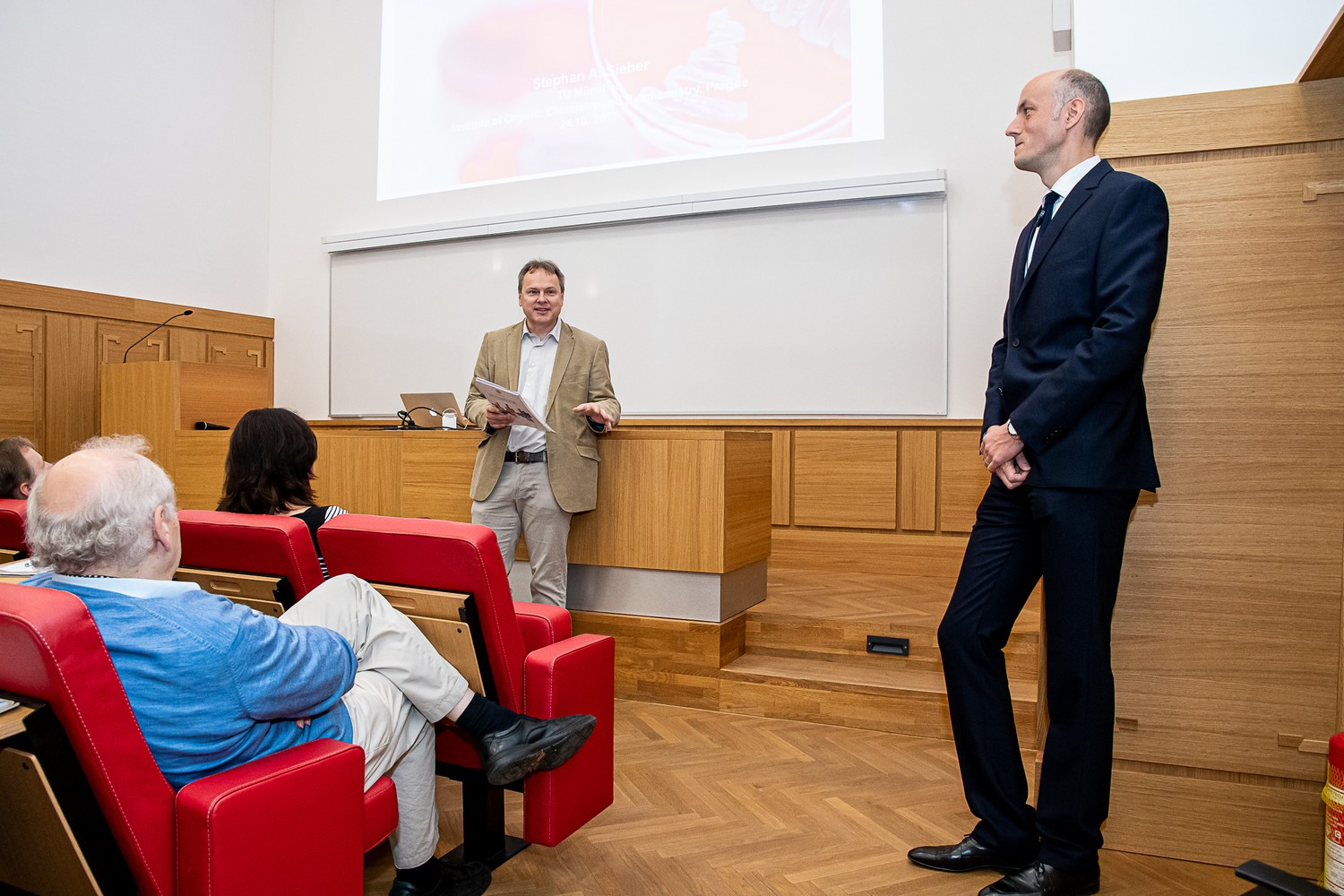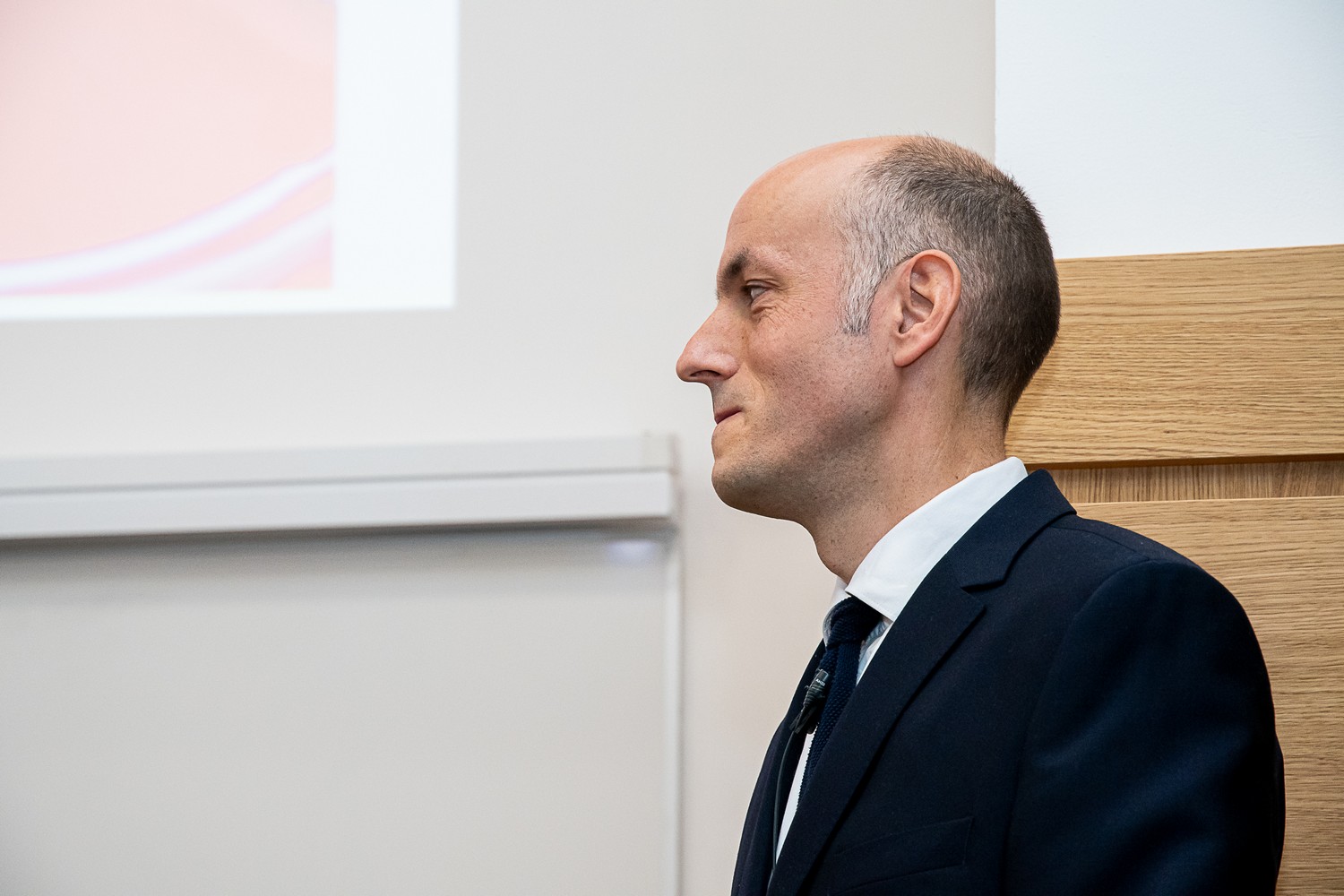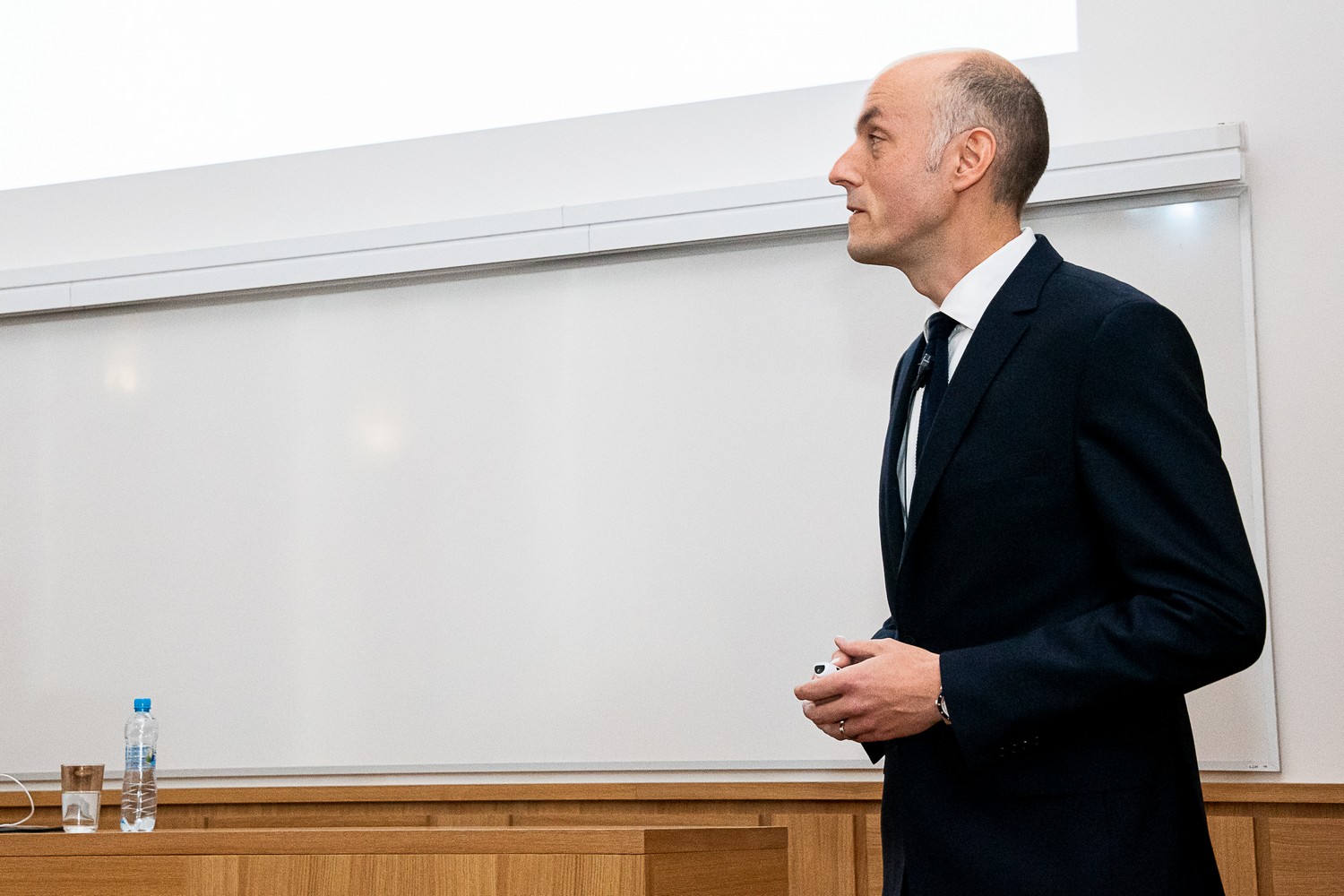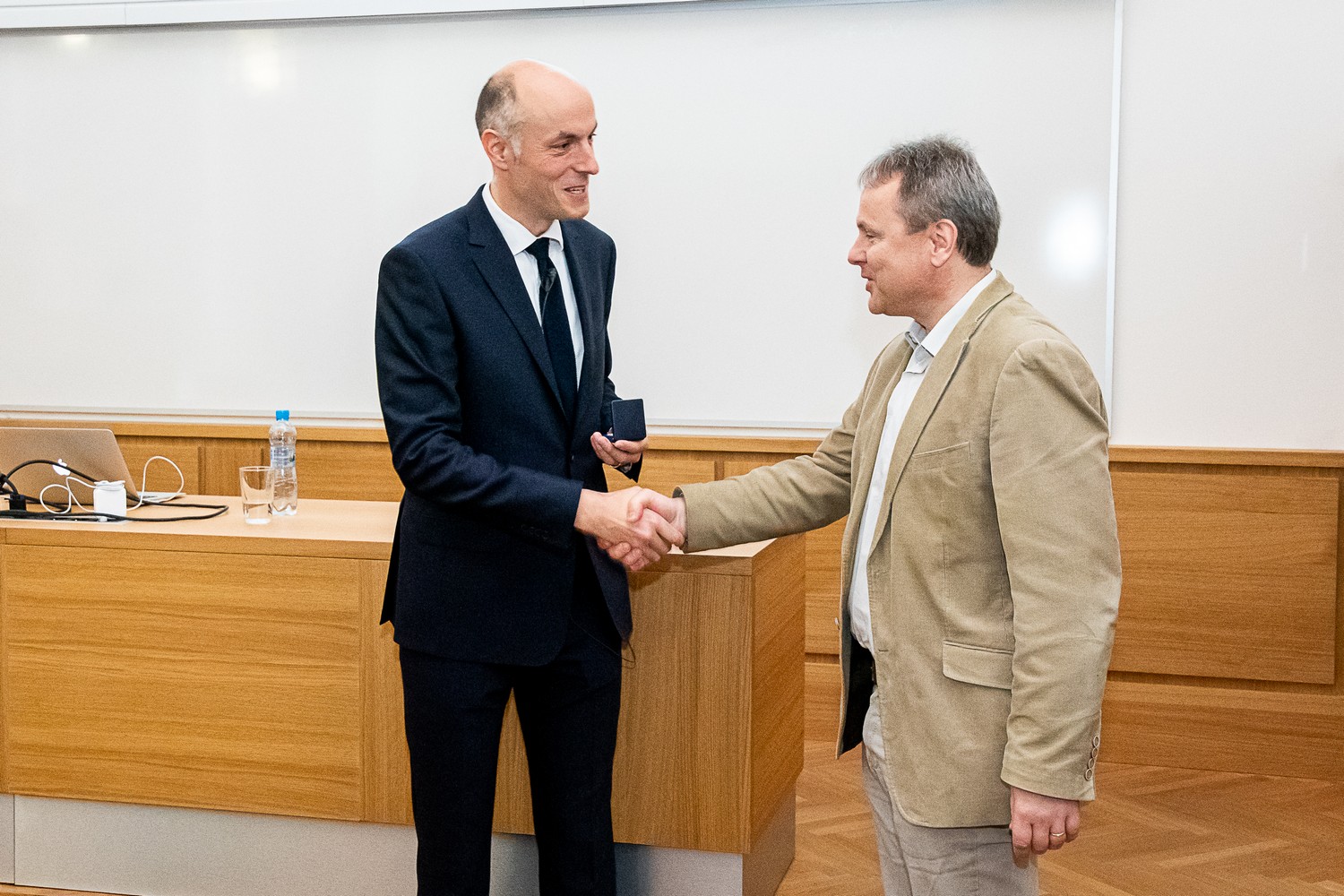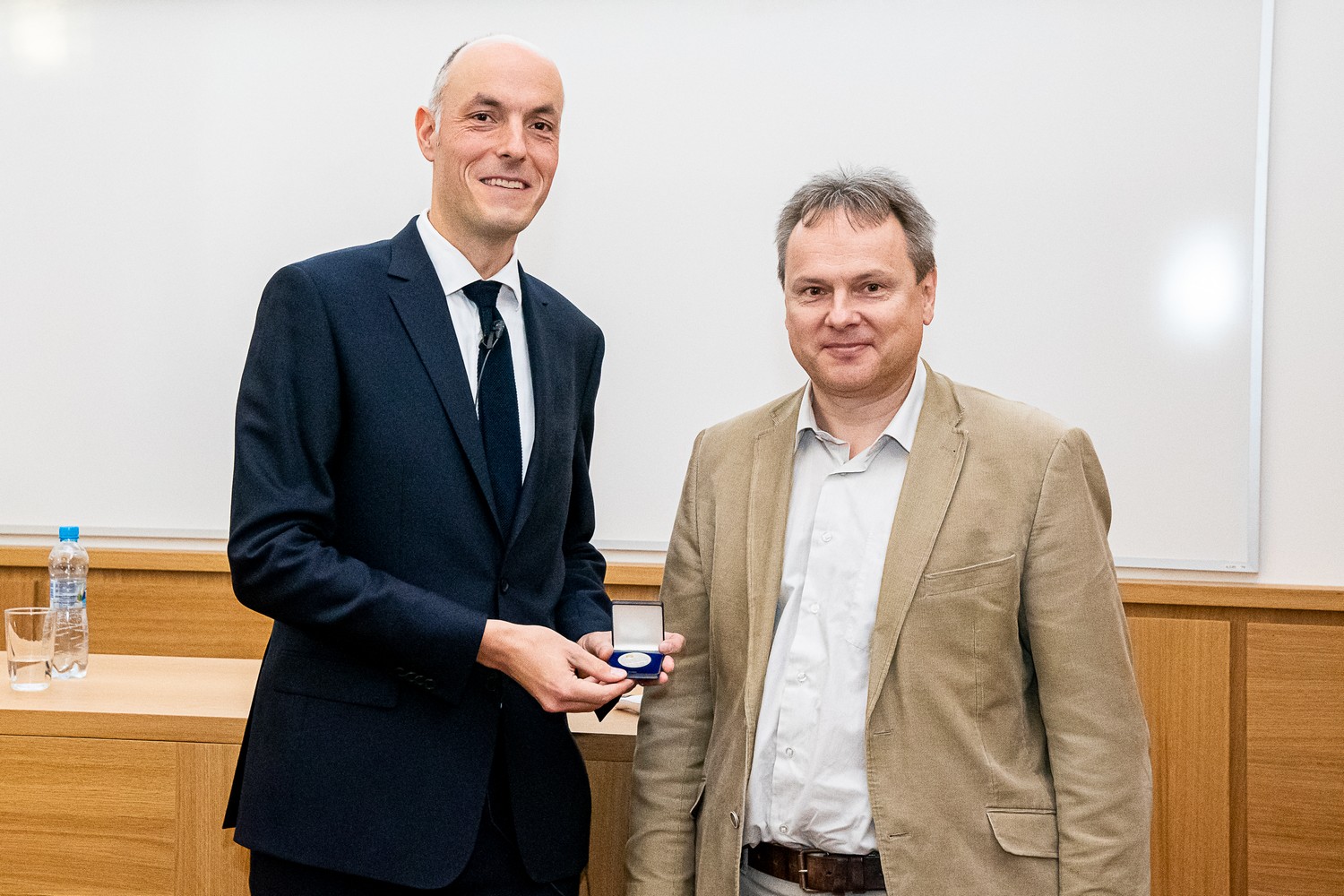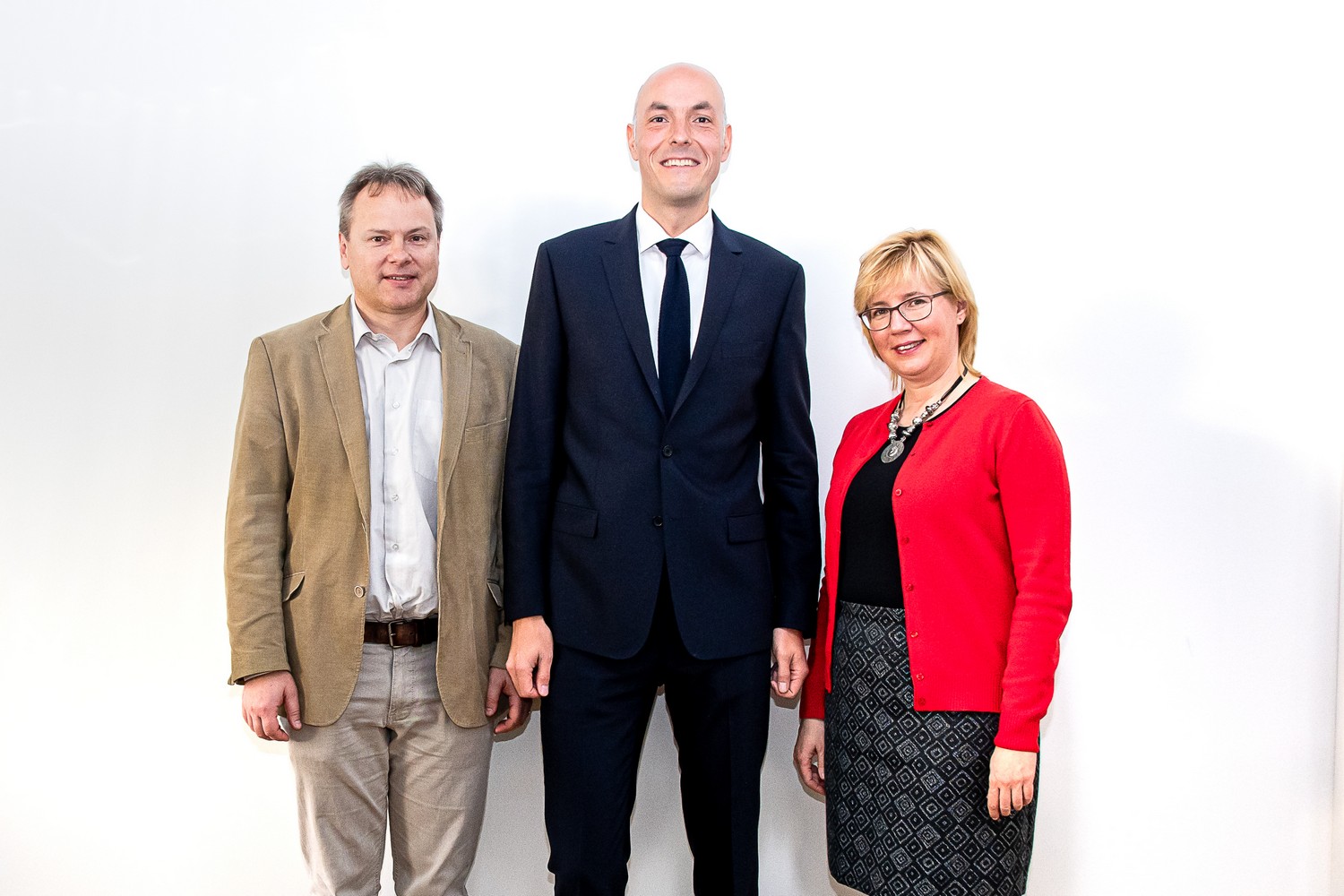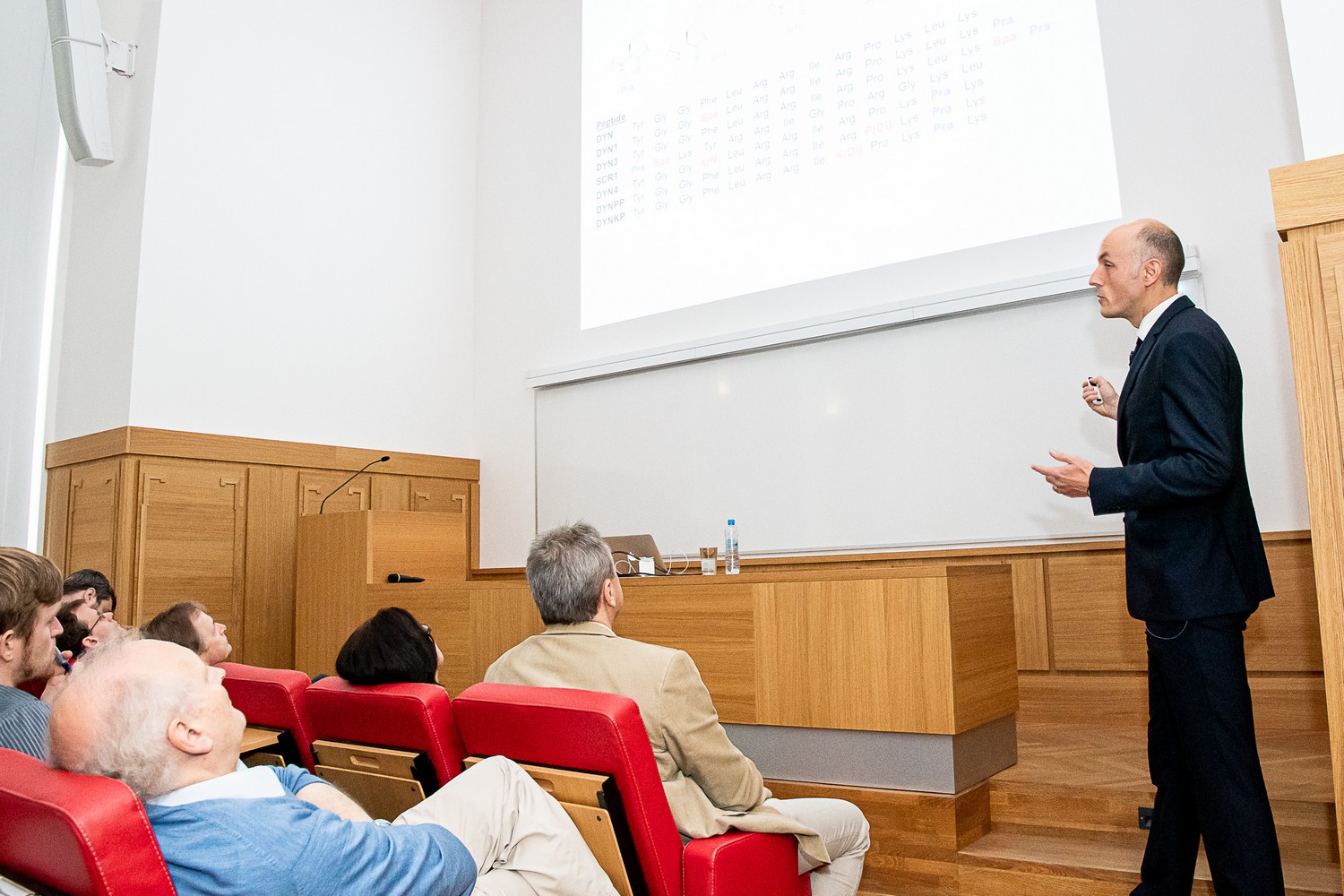
Prof. Stephan A. Sieber (Technische Universität München, Garching, Germany)
Chemical Tools to Manipulate Bacterial Virulence
24 October 2017, 10 a.m.
IOCB Prague, Lecture Hall (Building A, 2nd floor, A2.01)
Abstract
Multiresistant bacterial pathogens such as Methicillin-resistant Staphylococcus aureus (MRSA) are responsible for a variety of severe infections that pose a significant threat to global health. To approach this challenge new chemical entities with an unprecedented mode of action are desperately needed. This presentation will cover our latest efforts to identify new anti-bacterial targets and corresponding chemical inhibitors with the main emphasis on caseinolytic protease P (ClpP).
The barrel-shaped ClpP protease is a highly conserved virulence regulator in bacterial pathogens. Genetic ClpP knockouts in S. aureus revealed a reduction in virulence, i.e. the expression of bacterial toxins, resulting in attenuated infections in murine abscess models.[1] Similarly, the same phenotype was observed upon the chemical inhibition of ClpP with beta-lactones, the only specific inhibitors reported for ClpP to date.[2] These tool compounds helped to dissect the mechanism of inhibition which is based on binding into a hydrophobic pocket that in turn destabilizes the tetradecamer and induces dissociation into inactive heptamers.[3] Complementary structural studies of inhibitor binding reveal a highly dynamic complex that is regulated by conformational switching[4] via a network of catalytic residues that link enzyme activity with oligomerization.[5] Thus inhibition via de-oligomerization represents an attractive strategy to eliminate bacterial virulence and attenuate pathogenesis in vivo. A second generation of covalent ClpP inhibitors with superior potency, inhibition kinetics, stability and specificity will be presented as well.
In a separate approach we identified a new compound class that critically reduces the expression of multiple toxins in several MRSA strains. Chemical synthesis of improved derivatives led to the identification of an active molecule with suitable metabolic stability. Its mode of action was investigated by next generation sequencing as well as affinity based protein profiling (ABPP). Global downregulation of 9 virulence associated genes suggested the inhibition of a central pathway which was confirmed by mass-spectrometry based identification of a central metal transport protein as a molecular target. The anti-virulence mode of action and the corresponding absence of resistance development in in vitro assays could furthermore contribute to longer lasting drugs.
References
- D. Frees, S. N. Qazi, P. J. Hill, H. Ingmer, Mol Microbiol 2003, 48, 1565-1578.
- T. Böttcher, S. A. Sieber, J Am Chem Soc 2008, 130, 14400.
- a) M. Gersch, F. Gut, V. S. Korotkov, J. Lehmann, T. Bottcher, M. Rusch, C. Hedberg, H. Waldmann, G. Klebe, S. A. Sieber, Angew Chem Int Ed Engl 2013, 52, 3009; b) M. Gersch, R. Kolb, F. Alte, M. Groll, S. A. Sieber, J Am Chem Soc 2014, 136, 1360.
- M. Gersch, K. Famulla, M. Dahmen, C. Gobl, I. Malik, K. Richter, V. S. Korotkov, P. Sass, H. Rubsamen-Schaeff, T. Madl, H. Brotz-Oesterhelt, S. A. Sieber, Nat Commun 2015, 6, 6320.
- E. Zeiler, A. List, F. Alte, M. Gersch, R. Wachtel, M. Poreba, M. Drag, M. Groll, S. A. Sieber, Proc Natl Acad Sci U S A 2013, 110, 11302.
